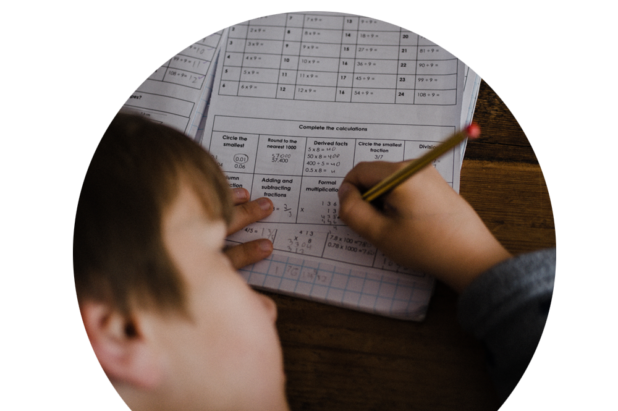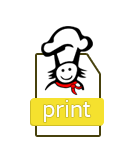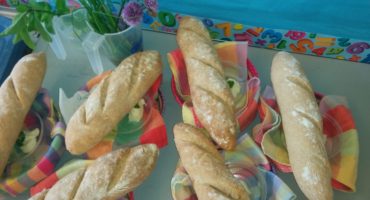We’ve been hearing a lot about yeast these days. Everyone wants it and it’s hard to find in the stores. What’s so special about yeast? Lots!
Yeast is a leavener that makes bread rise and has been used to make bread for thousands of years. It is also used to make wine and beer. Yeast is alive and it’s kind of a miracle to watch it work! It’s a single cell organism that is related to fungi and it is all around us. When you purchase commercial yeast in a jar it is in a dormant state, or, as a student once asked, “You mean in a coma?” Well, sort of, yes. It needs certain conditions to survive and grow, just like you do. What do you need to survive and grow? Do you think these conditions may be the same for yeast? Let’s find out with an experiment. To experiment we need to use the scientific method.
STEP 1 Gather Your Materials
Materials
- Food Journal or piece of paper
- Pencil and eraser
- Five small bowls
- ¼ cup yeast
- ¾ cup warm water
- ¼ cup cold water
- ¼ cup sugar
- 5 soup spoons
- Measuring cup and spoons
- 5 pieces of paper or sticky notes
STEP 2 Discovery
What is it you want to discover? Write down the Problem in your Food Journal
STEP 3 A Hypothesis is where you make a smart guess
If yeast is a living organism, what do you think it needs to survive and grow?
STEP 4 Experiment to test your hypothesis
Place 5 small bowls on a table or kitchen counter. Write on sticky notes or pieces of paper and place in front of each bowl:
-
- Bowl 1: yeast, sugar
- Bowl 2: yeast, warm water
- Bowl 3: yeast, warm water, sugar
- Bowl 4: yeast, cold water, sugar
- Bowl 5: yeast, warm water, sugar, salt
Measure ingredients into the bowls
-
- In bowl 1 measure 2 teaspoons yeast and 2 teaspoons sugar
- In bowl 2 measure 2 teaspoons yeast, ¼ cup warm water (not hot, but like bath water)
- In bowl 3 measure 2 teaspoons yeast, ¼ cup warm water, 2 teaspoons sugar
- In bowl 4 measure 2 teaspoons yeast, ¼ cup cold water, 2 teaspoons sugar
- In bowl 5 measure 2 teaspoons yeast, ¼ cup warm water, 2 teaspoons sugar, 1 teaspoon salt
- Mix each mixture with different spoons.
STEP 5 Observe and Collect Data
- Wait 5 minutes. Observe each bowl and write down your observations on the pieces of paper by each bowl. What do you see? What do you smell? Write down the data.
- Wait another 5 minutes – 10 minutes after you started the experiment. Observe each bowl and write down your observations on the pieces of paper by each bowl. What do you see? What do you smell? Write down the data.
- Look over the data you wrote and think about your problem: What conditions does yeast need to survive and grow? Hmmmm.
STEP 6 Conclusions
- Based on the problem or question, your observations and data you collected, can you now answer the question? What does yeast need to survive and grow? Also think about what yeast does not need. Write your conclusions in your food journal.
- Was your hypothesis right? Did this give you other food for thought?
- Add the data you collected to your food journal. Tape or glue your data in your food journal to document your scientific process.
Step 7 Clean up your yeasty experiment
Digging Around
Do some research to think beyond this experiment. Document your sources. For example: Book – Growing Organic, by A. Farmer or Website – westcoastseeds.com
- When yeast has the right conditions to survive and it grows, what happens next? Once the yeast has been fed and watered, what does the yeast produce to help make bread? Can you prove this when looking at a piece of bread?
- What is the difference between commercial yeast and yeast from a natural starter?
- Now that you know what yeast needs to survive and grow, what are some “dos and don’ts” for bread making? Write these important points in your Food Journal.
- Many of the bread recipes on our website originate from different countries as most countries in the world make some kind of bread. Pick 10 countries and write them down in your Food Journal. Do a little digging around and find breads that are made in these countries.
- Get cooking and put science into action! We have many bread recipes on our website that use yeast. Try making one of the recipes below.
Yeast Bread Recipies
Whole Wheat Pizza
The great thing about making pizza at home is that it’s easy to customize. In fact, everyone can make their […]
Read More ›Whole Wheat Baguette
Today’s delicious baguette is a whole grain recipe. Canada’s Food Guide recommends that about a 1/4 of our plate should be […]
Read More ›CALZONE
Originating from Italy, Calzones are like a folded pizza stuffed with all of your favourite ingredients. This version is a […]
Read More ›Eggy Bread Egg Nests
With signs of Spring popping out around us, making bread nests with eggs tucked inside is a perfect family activity […]
Read More ›Pita Bread
Making pita is a wonderful thing. The feel of cool flour then sticky dough on your hands; the energy and […]
Read More ›Books We Love
A book we love on everything to do with food and science is On Food and Cooking: The Science and Lore of the Kitchen, by Harold McGee, Schibner, New York, 2004. Every chef should have this book.
A fun book to explore the science of yeast with younger cooks, complete with singing, dancing and bubble-blowing yeast organisms, is Suzie’s Sourdough Circus, by Kathy Sager with illustrations by Eliska Liska, Harbour Publishing Co., BC, 2011.
Curriculum Connections

Science





















